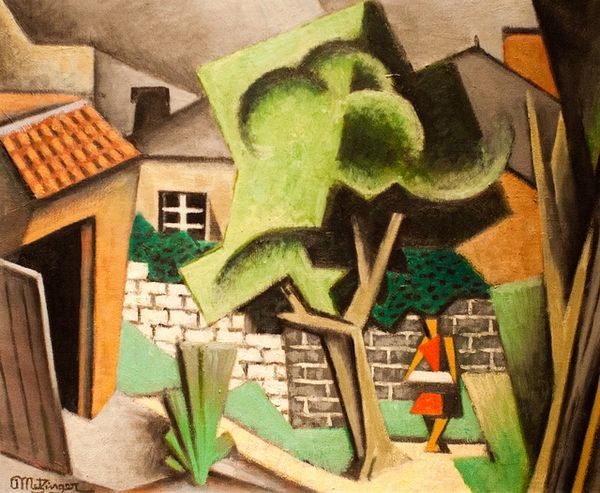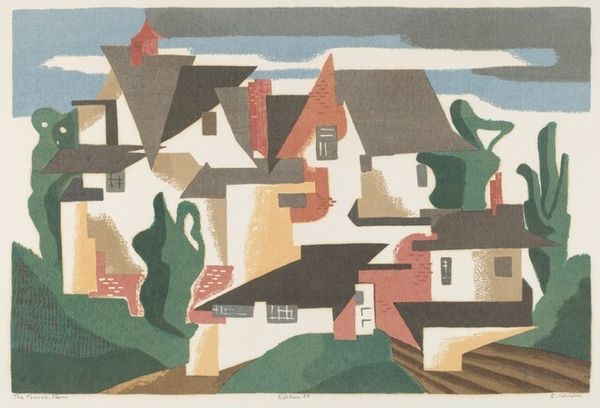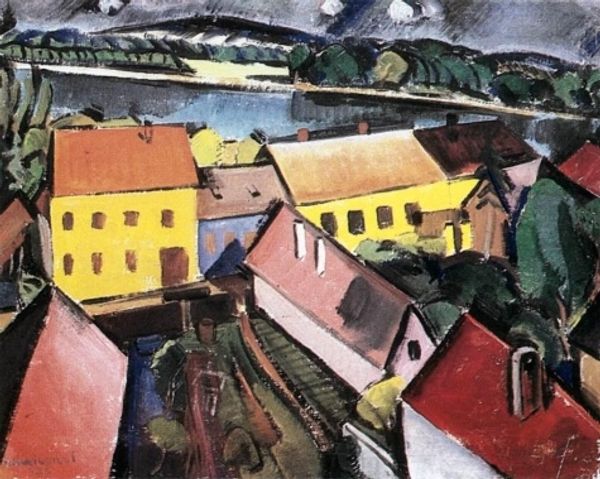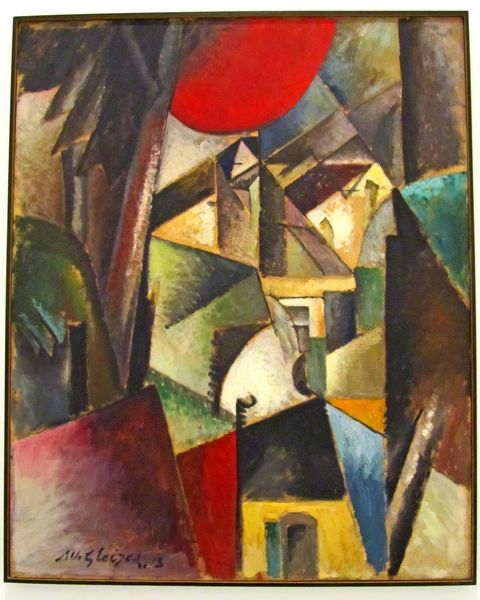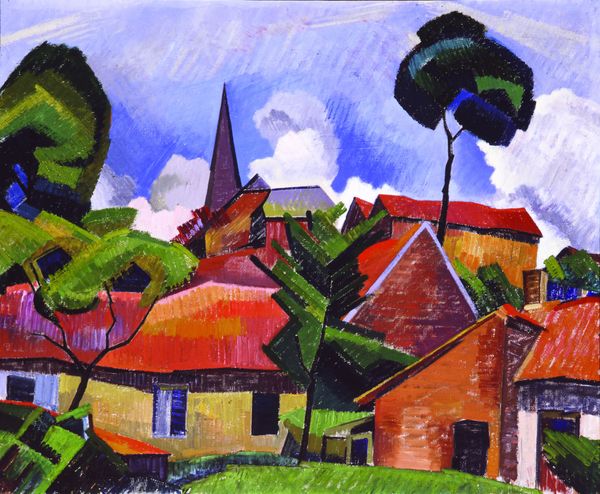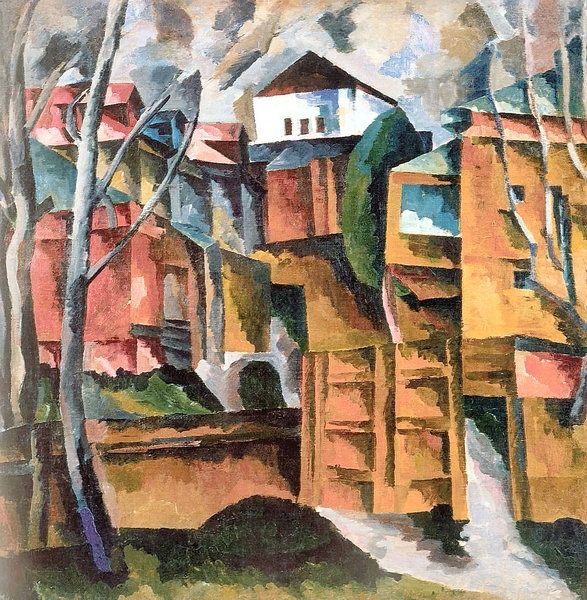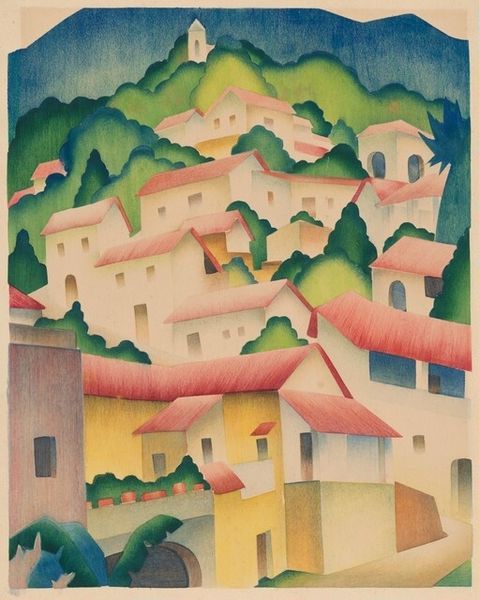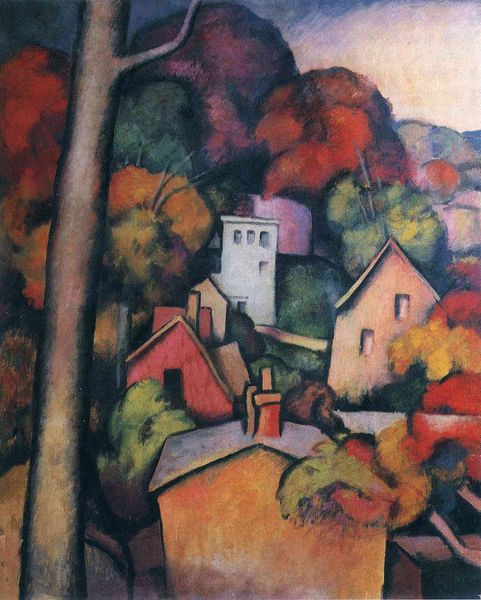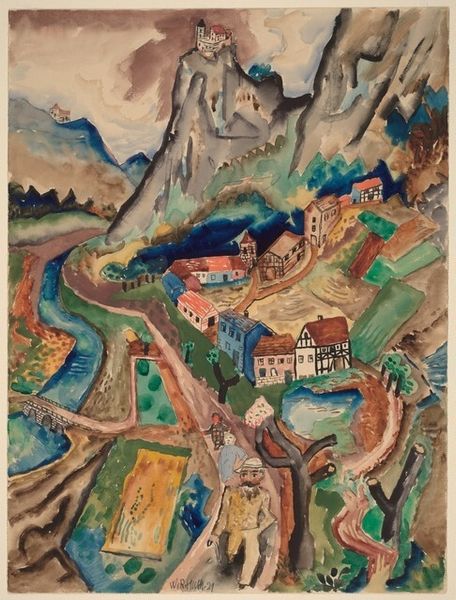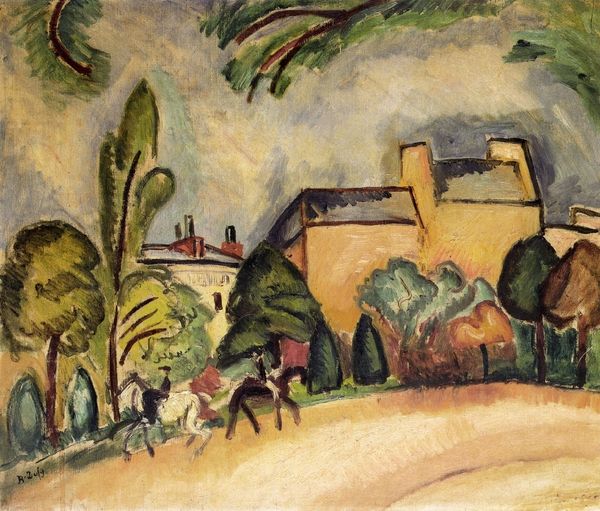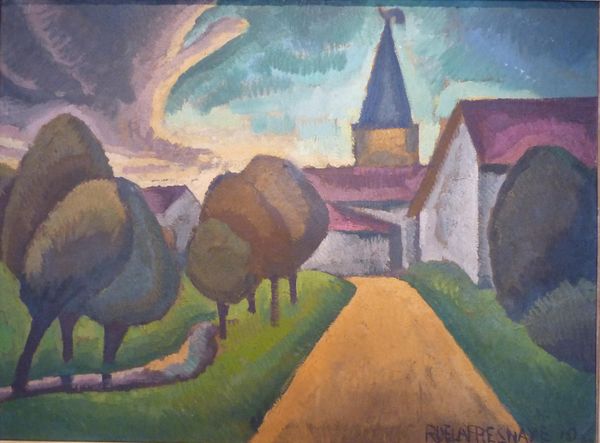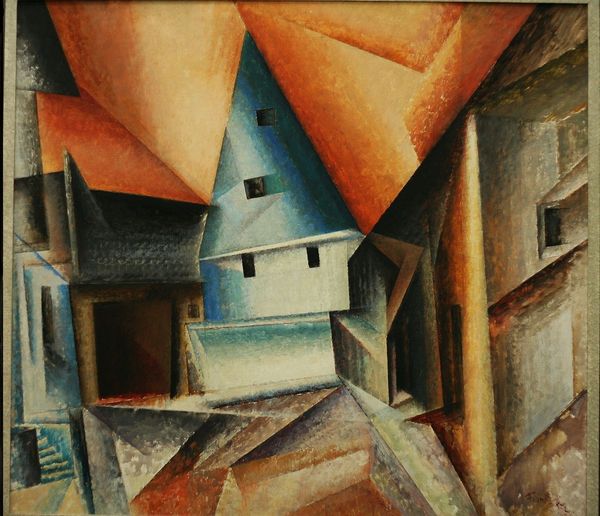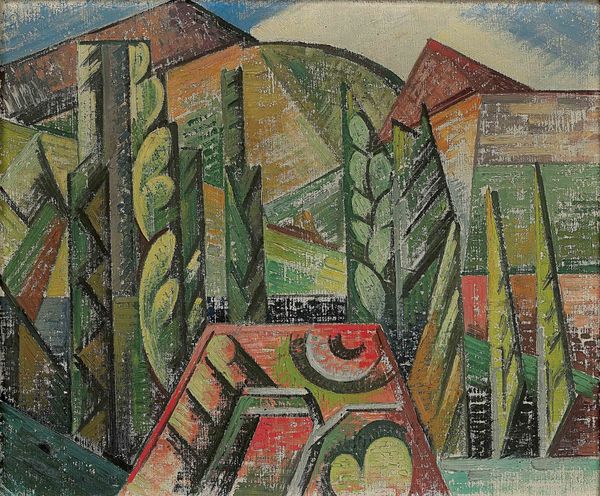
painting, watercolor
#
cubism
#
abstract painting
#
painting
#
landscape
#
watercolor
#
geometric
#
naive art
#
abstraction
#
cityscape
#
post-impressionism
#
watercolor
Copyright: Auguste Herbin,Fair Use
Auguste Herbin’s "Villaggio di collina" is an oil painting that captures a stylized hilltop village. Herbin applied the paint with deliberate strokes to create a Cubist-inspired scene. The character of oil paint lends itself to the creation of textures and gradients, which Herbin uses to give volume to the buildings and vegetation of the town. The materiality of the oil allows for the layering of color, creating depth and a sense of perspective. Herbin’s emphasis on geometric forms—cubes, cones, and pyramids—simplifies the architectural and natural elements of the landscape. This style relates to industrial modes of production, where standardized shapes can be easily replicated, reminiscent of early 20th-century mass production, influencing visual culture beyond functional objects. Considering the material and the way it's been applied, the finished painting becomes more than just a pretty picture. It reflects a broader cultural shift toward abstraction and standardization, challenging traditional art to respond to the rapidly changing world.
Comments
No comments
Be the first to comment and join the conversation on the ultimate creative platform.
